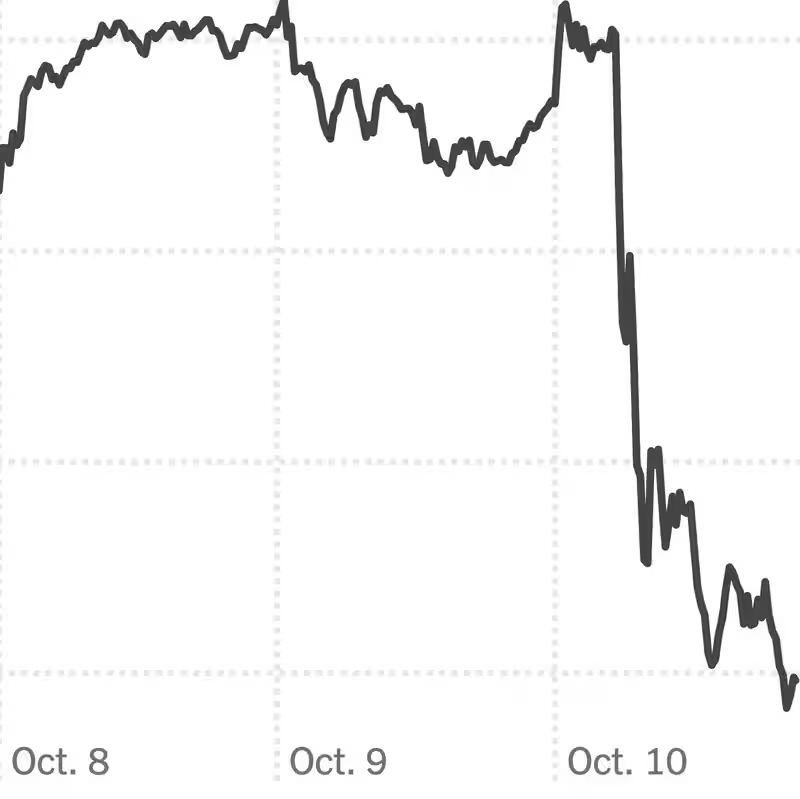Wall Street got a jarring wake-up call on Friday, October 10, 2025, as the stock market tumbled in response to renewed trade tensions between the U.S. and China. President Trump’s threat to impose massive new tariffs—including a staggering 100% duty on all Chinese goods—sent the S&P 500 and Nasdaq into their steepest single-day declines in six months.
After five straight months of record-breaking gains, investors were caught off guard. The S&P 500 dropped 2.7%, while the tech-heavy Nasdaq Composite slid even more sharply—its worst day since April .
Why Did the Stock Market Crash?
The trigger was geopolitical—and very Trumpian. On Friday morning, the president announced on Truth Social that his administration was “calculating a massive increase of tariffs on Chinese products” in response to Beijing’s new restrictions on rare earth exports—critical materials used in everything from smartphones to AI chips .
By evening, the rhetoric escalated: “100 percent tariff on all goods from China,” Trump declared, reviving fears of a full-blown trade war just as markets had settled into a calm, bullish rhythm.
Tech Stocks Take the Hardest Hit
Given China’s central role in global semiconductor supply chains, tech stocks bore the brunt of the sell-off:
- Nvidia: down nearly 5%
- Advanced Micro Devices (AMD): fell almost 8%
- Broad semiconductor sector: slid over 5%
Investors fear that higher tariffs could disrupt manufacturing, inflate costs, and squeeze profit margins—especially for companies reliant on Chinese components or assembly.
Oil Prices Also Tumble Amid Economic Fears
The ripple effects weren’t limited to equities. U.S. crude oil prices plunged more than 4% to under $59 a barrel—their lowest level since May .
Why? Because tariffs—and the potential for retaliatory measures—raise the specter of slower global growth. If demand for energy drops, oil prices follow. And with most U.S. shale producers needing prices above $60 to turn a profit, prolonged weakness could mean fewer rigs, layoffs, and reduced drilling activity.
Table: Key Market Moves on October 10, 2025
| Index/Asset | Change | Context |
|---|---|---|
| S&P 500 | –2.7% | Worst drop in 6 months |
| Nasdaq Composite | –3.1% (est.) | Largest decline since April |
| Nvidia (NVDA) | –4.9% | AI chip exposure to China |
| AMD | –7.8% | Heavy reliance on Asian supply chain |
| U.S. Crude Oil | –4.2% ($58.70/barrel) | Lowest since May 2025 |
Is This a Correction or Just a Speed Bump?
Despite the sharp drop, the market remains resilient by historical standards. The S&P 500 is still less than 3% below its all-time high—a reminder that this may be a volatility spike, not the start of a bear market.
“After five straight months of gains, a pullback was overdue,” said Joe Rennison, financial markets reporter at The New York Times. “But Trump’s tariff talk adds a layer of uncertainty that could keep investors on edge.”
Some analysts are already dubbing the situation “Liberation Day Two”—a nod to the 2018 trade war that roiled markets for months .
What Should Investors Do Now?
While no one can predict short-term market swings, history shows that knee-jerk reactions often backfire. Long-term investors may want to:
- Rebalance portfolios if allocations have drifted
- Avoid panic selling into volatility
- Watch for policy clarity in the coming days—tariff threats don’t always become reality
That said, if Trump follows through on a 100% tariff, the economic impact could be severe—not just for stocks, but for consumer prices, inflation, and global supply chains.




